India train crash: Haunting images of a deadly 2002 disaster
- Published
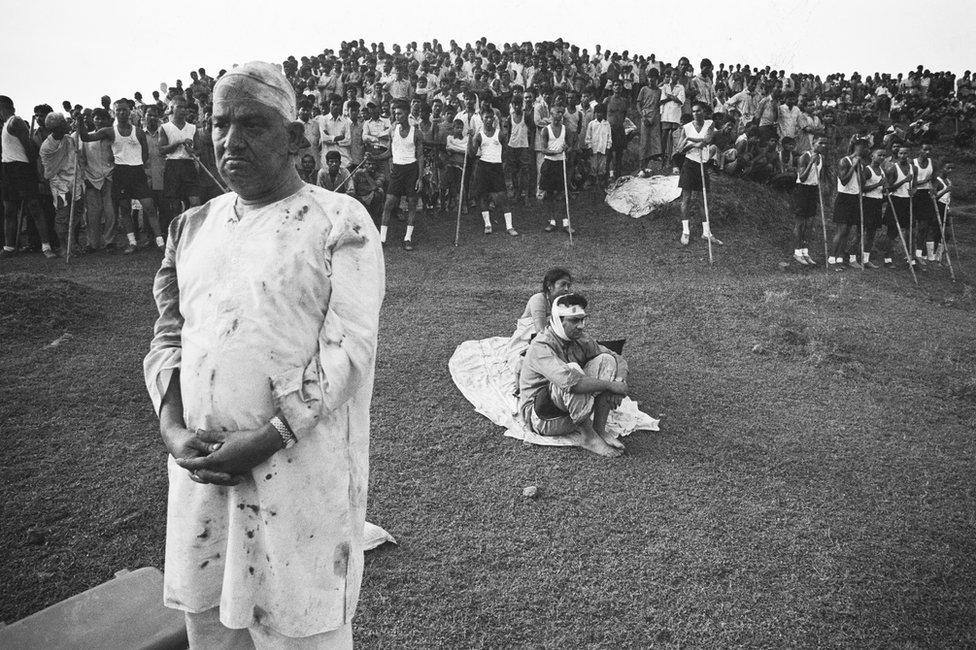
As the dawn broke, Saibal Das took a picture of a dazed survivor
At least 130 people died when a Delhi-bound express train derailed on a bridge in the eastern Indian state of Bihar in September 2002. Among the survivors was photojournalist Saibal Das. Here he sheds light on the harrowing night of the accident and tells the story behind his photographs, some of them taken moments after the accident.
It was a clear, bright afternoon when I boarded the Rajdhani Express for Delhi on the afternoon of 10 September 2002.
I had survived a massive heart attack some three months earlier, and was going for my first long-distance trip after recuperating. I was travelling to Delhi to attend a photography exhibition, commemorating one year of the 9/11 attacks.
I had a middle berth in AS3 - an airconditioned three-tier sleeper coach. My fellow passengers were a bunch of lawyers and one upper berth was unoccupied. We all kept our baggage - including my camera bag - on this berth.
Dinner arrived around 9pm, followed by ice-cream. After chatting a bit with the lawyers, we turned in for the night.
I was awakened by a deafening sound that reverberated through the coach and filled my ears. The train jolted violently and abruptly halted. Our coach was tilted precariously to one side.
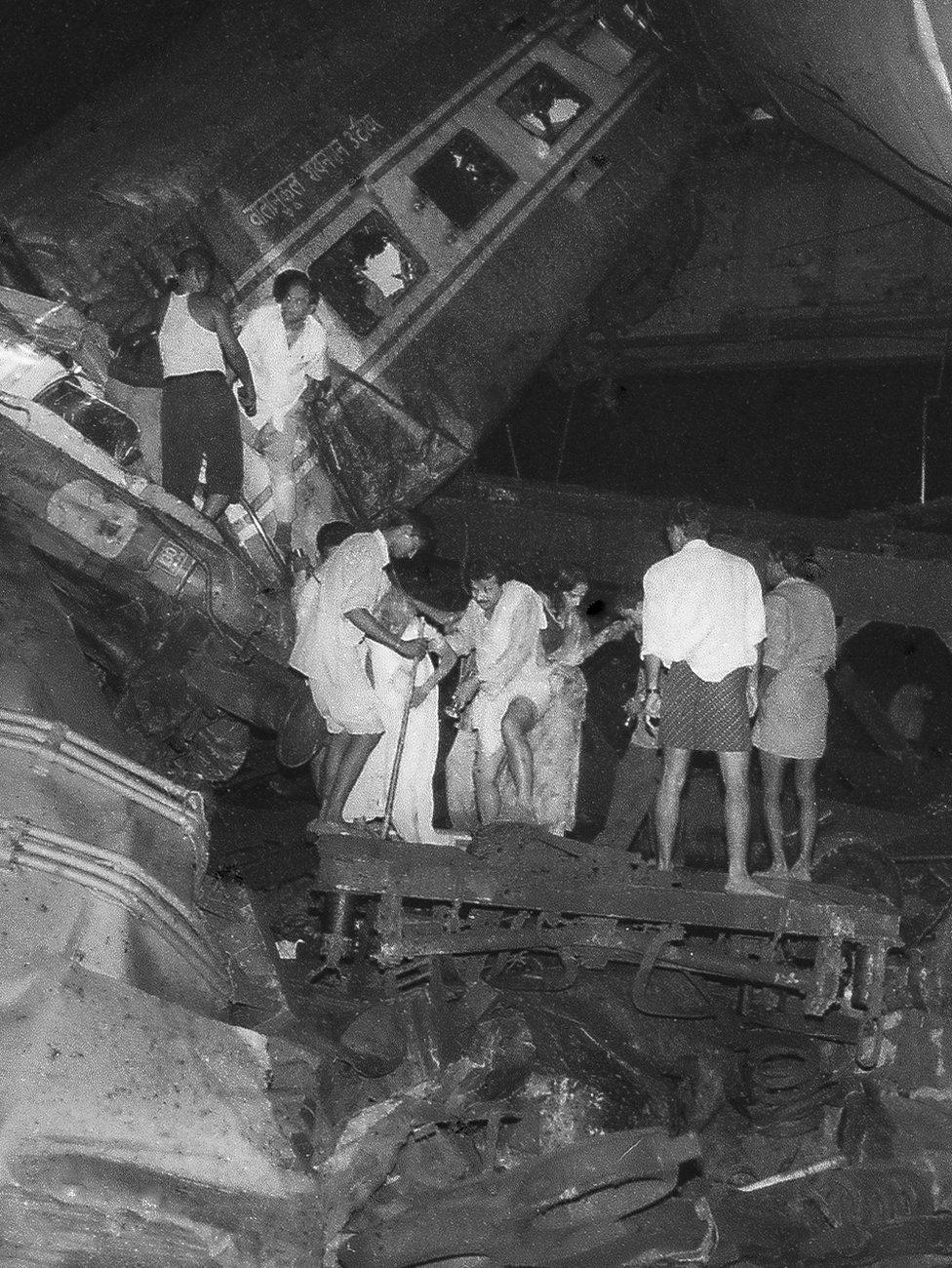
One of the first photographs Das took in the dark was of a frail, elderly woman, guided out of an upturned coach

For a few seconds I was in a shock. I lay in my berth as shouts and screams of trapped passengers pierced the air. I was bleeding from my chin. My legs hurt.
The first thought that raced through my head was 'what is going on with me? I had survived a heart attack a few months ago. Was I in an accident now?'
Then I remembered my camera bag which had two cameras and some rolls of film, both black and white and colour. I grabbed the bag and climbed down from the berth.
Suddenly, a booming voice pierced through the clamour and declared: "Keep your courage, we are all alive." These words of an unknown man have reverberated within me ever since.
Broken glass littered the floor and twisted metal encased our surroundings. Passengers pressed forward to the nearest door, which had broken and was resting on the ground below. My co-passengers had survived, and we tried to join the throng of survivors to the door.
Much later, we learnt that AS3 was among the 14 coaches of the Rajdhani Express that had jumped tracks while travelling at around 130km/h (80mph) near Rafiganj station, about 510km (315 miles) from Kolkata.
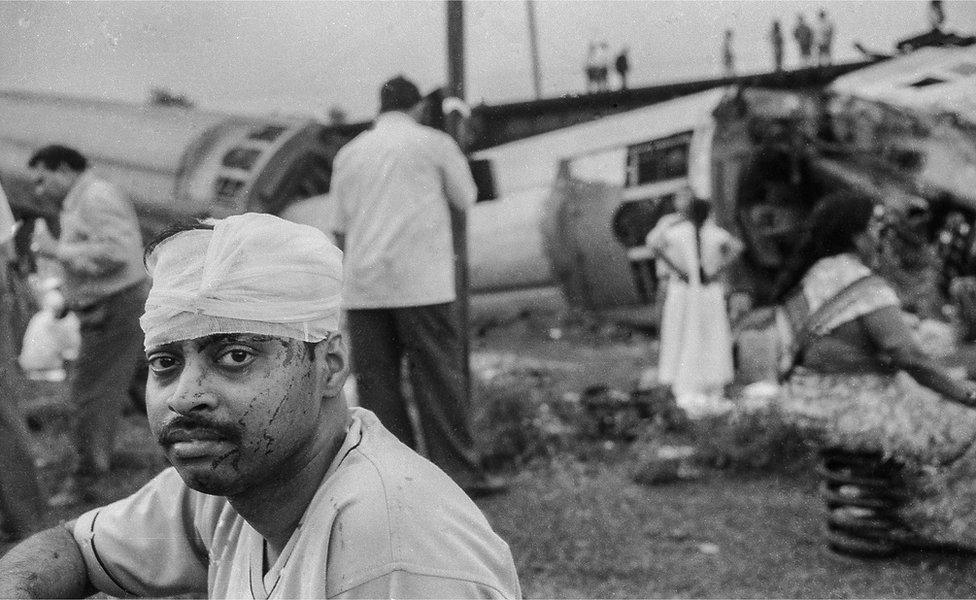
'A speechless young man, heavily bandaged, gazed emptily into the camera'
I clambered out of the coach and sat on the ground. When I opened my camera bag, I realised I didn't have enough film because I was not on assignment. I told myself I would have to ration my film if I were to record the devastation around me.
It was a moonless night and it was drizzling. In the dark I could make out that my coach was hanging from the track with its bottom touching the ground. Survivors were spread out across the field.
Then something surreal happened.
I saw a multitude of lights, possibly hundreds of them, swaying and advancing towards us in the darkness. It was like an army of light silently descending upon the scene.
Only when the lights got closer we realised that they were villagers who, on hearing the sound of the crash, had picked up their torches and lanterns and were coming to help us.
They ran to the wreckage, climbed into the coaches through broken doors and windows and began pulling people out. I took out my camera and began taking what turned out to be the first recorded pictures of the tragedy.
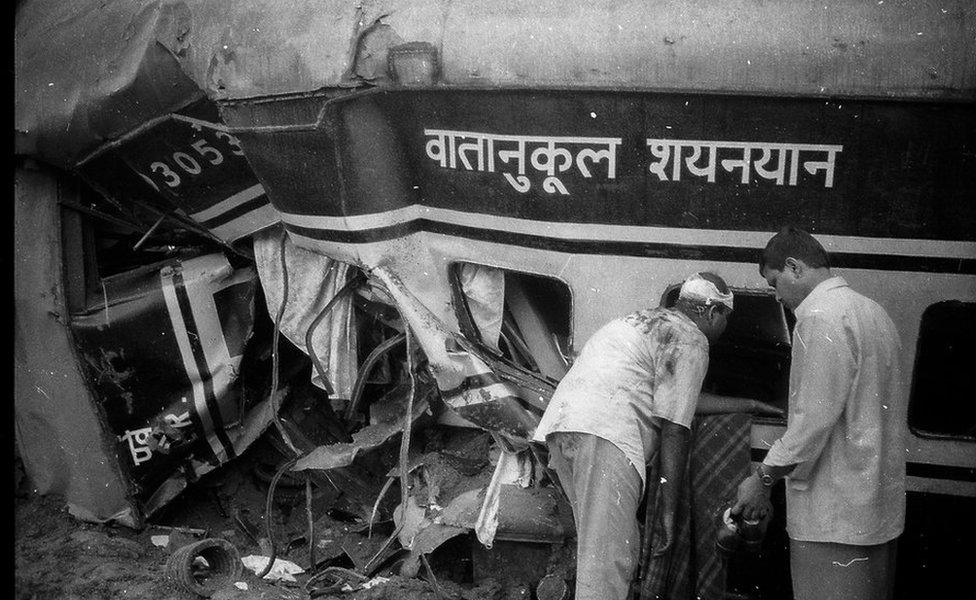
Villagers pulled out trapped passengers from mangled coaches
It was a blighted landscape. I could see some of the wreckage strewn on the track and chaos and pandemonium on the ground below. Very few passengers had phones, and there was no mobile phone signal in that area.
I retraced my steps back into our coach, retrieving blankets intended for the overnight journey and gathering abandoned water bottles strewn across the floor. Once outside, I gave them to those shivering in the drizzle.
Gradually, my eyes adjusted to the darkness, allowing me to begin taking more pictures. One of the first photographs was of a frail, elderly woman, guided out of an upturned coach.
When dawn broke, I took a lot of pictures. In one, a man, bandaged around his head, stands in the open, evidently dazed, as rescue workers cordon the area while a wounded couple sit in the field. In another a speechless young man, heavily bandaged, gazes emptily into the camera. In others, the dead and the barely alive are being brought out of the mangled coaches.
A relief train arrived later in the morning, bringing some relief material. We had already spent more than 10 hours in the rain and cold, with very little official help.
Etched in my memory is the generosity of unfamiliar faces. The villagers who rushed to our aid, securing milk for the children and bringing us tea in the morning. When the train carrying the rescued passengers arrived at the Delhi station a day later, Sikh drivers offered their services without charging a fare, ferrying us to our destinations.
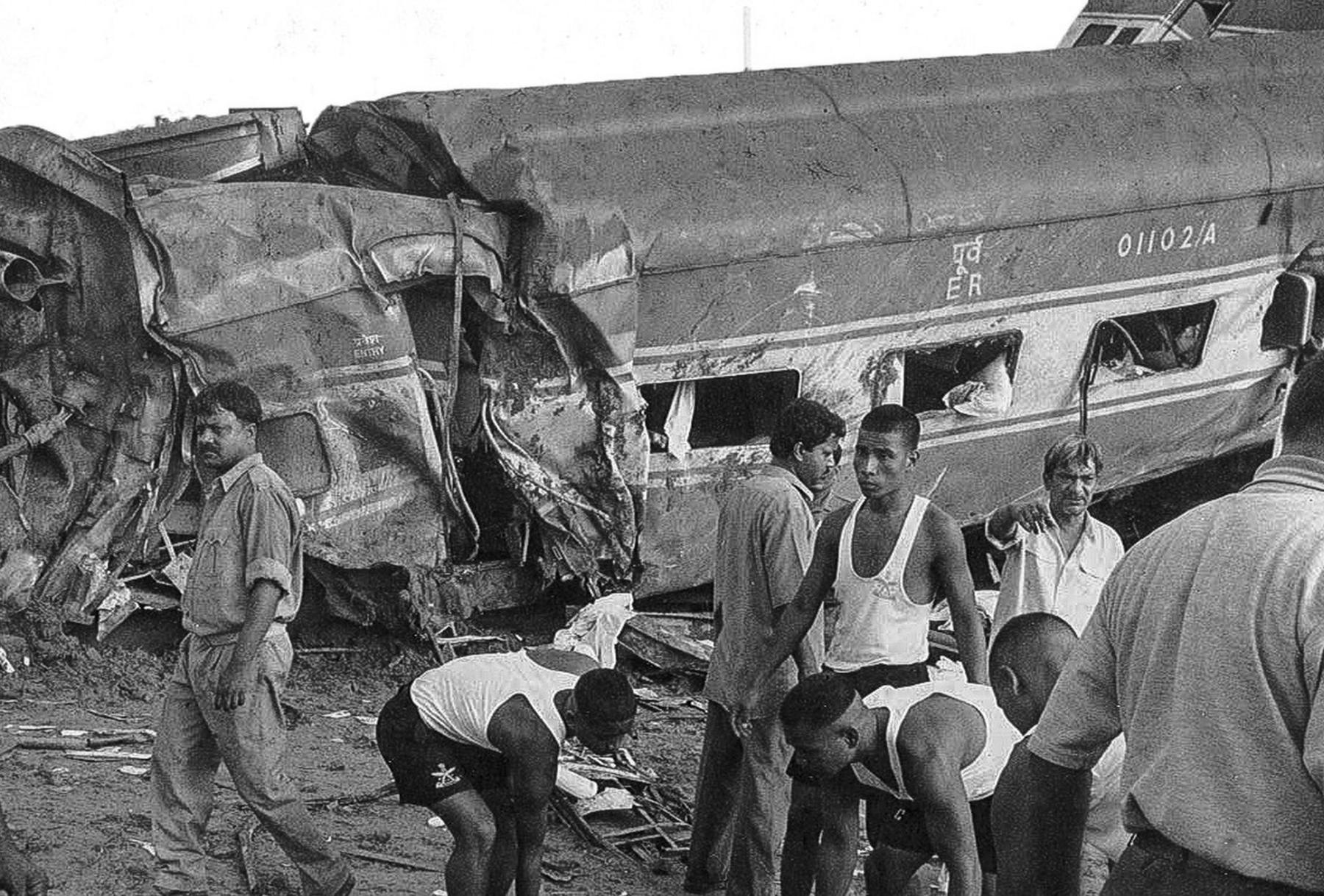
More than 130 people died in the Rafiganj crash
There are two memories of that day that will stay with me forever.
In the darkness, I stumbled on to an old friend who worked in the railways and was a fellow passenger. We hugged each other and cried: "We are alive!"
The other one is of an elderly Sikh couple sitting on a bench at the station in Kolkata before I boarded the train. I remembered them because it looked like they shared great affection.
The next time I saw them was hours after the accident. The man sat in the field, his gaze fixed upon the body of his lifeless wife, draped in a white shroud, resting on the ground.
As told to Soutik Biswas
BBC News India is now on YouTube. Click here, external to subscribe and watch our documentaries, explainers and features.
